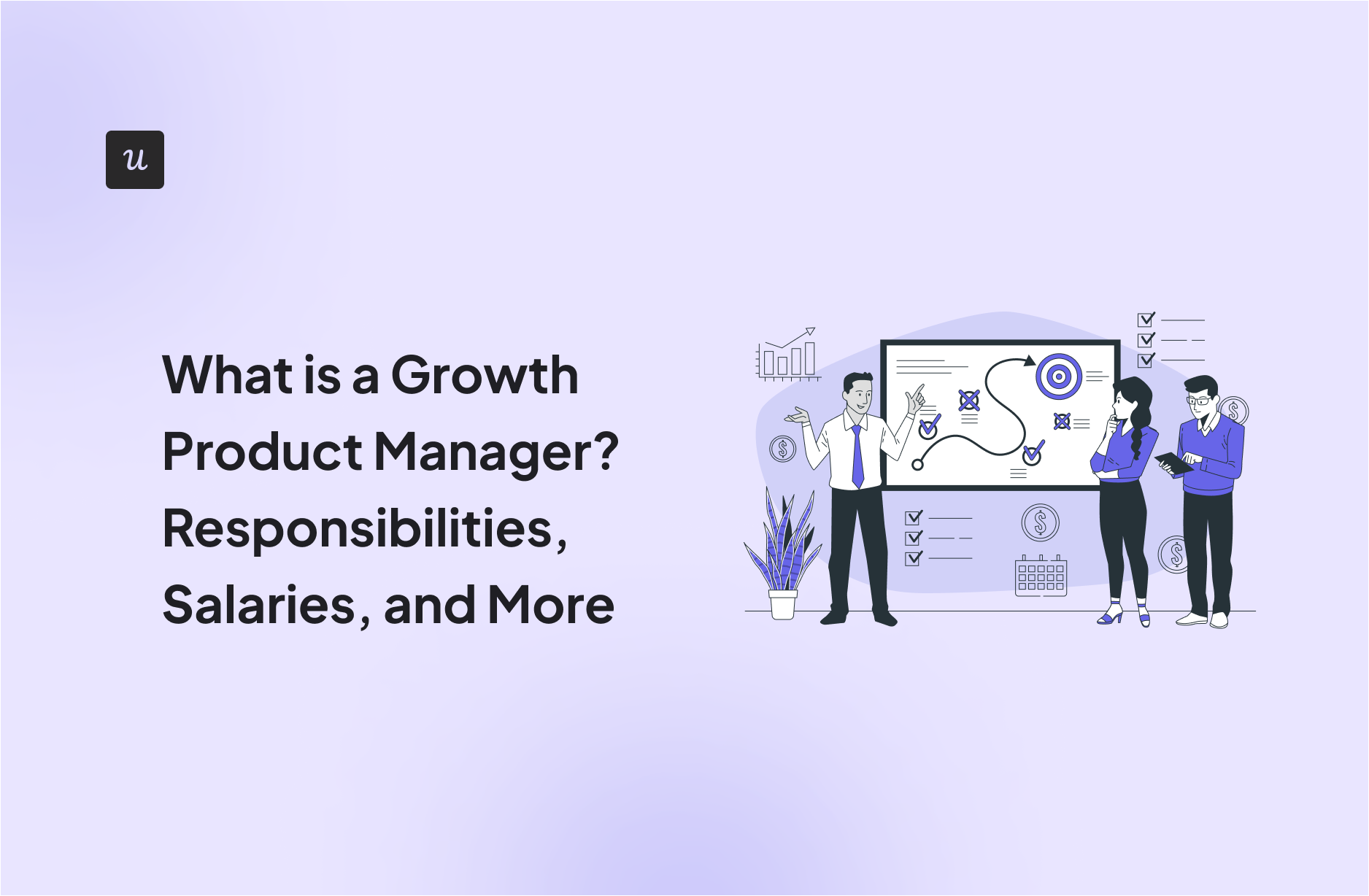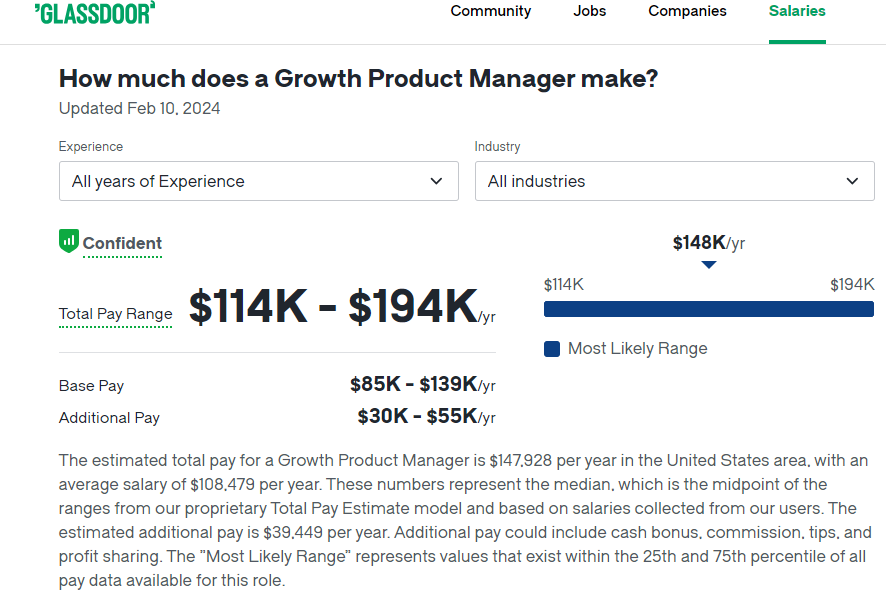
Try Userpilot Now
See Why 1,000+ Teams Choose Userpilot

What is a growth product manager?
A Growth product manager is a specialist position within product management focusing on identifying and executing product-led growth opportunities in acquisition, engagement, and retention.
Unlike traditional product managers responsible for owning a specific product’s vision and roadmap, growth product managers focus on a specific business goal or metric. That goal can relate to any point of the customer journey, from acquisition to retention and expansion.
Along with such goals, growth managers are also in charge of growth metrics, like improving Customer Acquisition Cost (CAC) and activation rate.
What does a growth product manager do?
In order to drive product growth throughout the funnel, there are several responsibilities a growth product manager must adopt. These include conducting research to understand customer needs and analyzing product usage and user behavior to uncover improvement areas and friction points.
Furthermore, growth product managers also perform continuous experimentation and A/B testing to see how to improve things.
They also have to regularly monitor Key Performance Indicators (KPIs) to examine whether growth strategies are performing effectively. Then based on these insights, coupled with customer feedback and research, they must iterate strategies accordingly.
Growth managers must also collaborate with the marketing and development teams to seamlessly implement features to improve user experience and scale the product. In short, the growth product manager must always be on the lookout for opportunities to increase product adoption and Customer Lifetime Value (LTV).
Growth product manager’s main responsibilities
The main goal of any growth product manager is to drive sustainable growth by focusing on three key elements within the customer lifecycle: acquisition, engagement, and retention.
To ensure success in either of these components, there are multiple other responsibilities the growth manager must perform well. Let’s look at what these are.
- Define the company’s growth goals and prioritize direction, ensuring alignment with overall business objectives.
- Identify experience gaps through various analyses performed, such as funnel or path analysis.
- Measure progress by tracking select metrics, interpreting the results, preparing detailed reports for all to understand, and uncovering any product problem points or improvement areas.
- Regularly analyze customer behavior through both quantitative and qualitative means. This includes product usage and trend analysis, usability tests, and feedback collection.
- Build and execute experiments and tests, typically in collaboration with marketing, development, and design teams, to understand what customers engage with better.
- Increase the customer lifetime value by identifying opportunities for upsells and cross-sells to ultimately drive revenue retention.
- Optimize user onboarding to improve the initial customer experience, creating supplementary onboarding materials and guides to help customers reduce time to value.
- Stay on top of the changing market dynamics through continuous research on the industry and competitor actions.
- Effectively communicate growth goals and progress across departments to ensure cohesive commitment and execution.
- Manage the budget for all growth initiatives, keeping an eye on ROI for all growth activities and campaigns.
Growth product manager salary
Experience has the biggest impact on how much you can earn. Here’s how your level of work experience can impact your growth product manager salary, according to Glassdoor:
- 1 to 3 years (Growth Manager): $144,485/year
- 4 to 6 years (Senior Growth Manager): $159,244/year
- 7 to 9 years (Growth Director): $166,916/year
- 10+ years (Head of Growth): $184,862/year
There are some industries where the role of a growth product manager is in great demand, which also means a higher salary. Here are a few of those industries, along with the salaries they offer:
- Agriculture: $186,000/year
- Healthcare: $183,000/year
- Information Technology: $171,000/year
Apart from these two factors, location is another important element that can greatly impact the growth of a product manager’s salary. According to Glassdoor, here are the average salaries for this role in some big US cities:
- New York: $133,309/year
- San Francisco: $149,590/year
- Austin: $137,741/year
- Washington, DC: $131,110/year
- Chicago: $126,779/year
Growth product manager career path
- Junior Growth Product Marketer: The focus at the very start is on gaining a deep understanding of growth metrics and strategies, acquisition channels, and different analytical tools.
- Growth Product Manager: In this role, you will be given more responsibilities to find growth opportunities and design and execute appropriate growth strategies to capitalize on them.
- Senior Growth Product Manager: This role demands more ownership, as you will lead growth initiatives and partake in strategic decisions for all products while mentoring junior peers as well.
- Product Growth Director: At this point, you oversee the overall growth strategy and implementation, coordinating between departments and actively dealing with stakeholders.
- Head of Product Growth: Once you reach the top, you’re responsible for defining the company’s growth objectives and ensuring they are aligned with the company’s business goals.
Best practices for being a great growth product manager
Since a growth product manager has to constantly juggle multiple tasks, they can sometimes lose focus on what’s important. To help with that, here are five crucial best practices that every growth manager should religiously follow.
- Data is your best friend: To truly nail product growth, all your strategies need to be data-driven because the numbers don’t lie. This means growth managers must be incredibly adept at data handling, performance tracking, and analytics.
- Keep customers at the heart of all strategies: Growth is only possible if you produce something customers like that caters to their needs and pain points. This is why growth managers heavily rely on customer feedback to drive product enhancements.
- Experiment, experiment, and experiment: A great growth product manager brings with them a culture of creativity, testing, and continuous discovery. Experiments should drive all innovation, from marketing campaigns to new feature development.
- Balance both acquisition and retention: A key mistake most growth product managers make is focusing too heavily on new customer acquisition and ignoring retention. Do better and balance both to drive long-term business growth.
- Always keep an eye on the market: Don’t get so hyper-fixated on your strategies that you completely ignore what’s going on in the market. Instead, stay up to date on the latest trends and tools and attend professional networking events to remain relevant.
Growth product manager FAQs
- What is the difference between a growth product manager and a traditional product manager? Traditional product managers focus on building the product in line with its long-term vision. In contrast, growth product managers concentrate on specific business goals, such as driving engagement and defining strategies to achieve that goal.
- What is the future of growth managers? Given the consistent rise in digital platforms and data-driven customer-centric solutions, trends suggest that the role of growth product managers is here to stay.
- Is a growth manager a good career? A growth product manager is a unique role as it requires expertise in several domains, namely marketing, strategy, product development, and data analysis. Due to this intersectionality, it is a good career path because it offers the opportunity to transition and grow in any of the above fields as you like.
- What is the difference between growth manager and business development? Business development involves discovering new market opportunities and ways to expand the customer base. Growth hacking focuses on experimentation and data to optimize customer experiences throughout the funnel to drive growth.
Conclusion
We hope this guide has provided you with valuable insights into the roles, responsibilities, and rewards associated with this role.
Looking into tools for growth product managers? Userpilot is an all-in-one product platform with engagement features and powerful analytics capabilities. Book a demo to see it in action!










